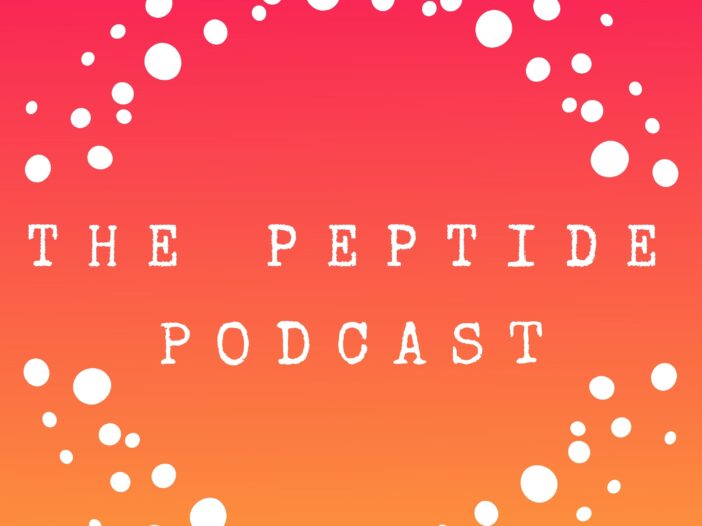
Today, we’re taking a close look at 5-Amino-1MQ—a compound gaining attention for its potential to improve fat loss, metabolic health, and longevity. We’ll break down how it works, the science behind it, and what that could mean for your health. Let’s get started.
So, What Is 5-Amino-1MQ?
Now, just to clear something up—5-Amino-1MQ isn’t actually a peptide. A lot of people assume it is because it’s often talked about alongside peptides like semaglutide or BPC-157, but it’s actually a small molecule compound.
Its full name is 5-Amino-1-methyl-quino-linium—yeah, a bit of a mouthful—and it’s designed to block an enzyme called NNMT. By doing that, it helps keep more NAD⁺ available in your cells, which is a big deal for energy production and metabolic health.
It was originally developed in the world of metabolic research. Scientists were exploring ways to improve insulin sensitivity and reduce fat accumulation—especially the dangerous kind, visceral fat.
So, while it plays in the same space as peptides when it comes to benefits—like fat loss, energy, and longevity—it’s a totally different kind of compound. Think of it more like a targeted metabolic activator than a signaling peptide.
Before we move on, I want to talk about visceral fat for a bit.
Visceral fat is the fat that builds up deep inside your abdomen, around your internal organs like your liver, pancreas, and intestines. It’s different from the fat you can pinch under your skin—like on your belly or thighs. That’s called subcutaneous fat.
Now, why is visceral fat a problem?
Because it’s metabolically active, which means it doesn’t just sit there—it releases hormones and inflammatory chemicals that can mess with your body’s systems. High levels of visceral fat are linked to things like insulin resistance, high cholesterol, high blood pressure, and a greater risk of type 2 diabetes, heart disease, and even certain cancers.
So even if someone looks slim on the outside, having too much visceral fat on the inside can still be dangerous for their health.
*What Is NNMT and Why Do We Want to Block It? Let’s Talk About The Science.
NNMT stands for nicotinamide N-methyltransferase.
This enzyme tends to be more active in people who are overweight or have metabolic issues. When that happens, it uses up a lot of something called NAD⁺—a compound your cells need to create energy, especially in the mitochondria, which are like the power plants of your cells.
So when NNMT levels go up, here’s what tends to happen:
You end up with less NAD⁺, your metabolism slows down, your body stores more fat, and your cells just don’t have the same energy or resilience.
That’s where 5-Amino-1MQ comes in. It blocks NNMT, helping your cells hold onto more NAD⁺—and that changes everything.
The Metabolic Benefits of Blocking NNMT
*So what happens when you increase NAD⁺ inside your cells?
Well, in studies—especially in animal models—5-Amino-1MQ led to:
- Fat breakdown and reduced fat accumulation
- Improved insulin sensitivity
- A 30% drop in cholesterol levels
- And get this—mice lost 5% of their body weight in just 11 days, without changes to diet or exercise.
And here’s the kicker—no signs of toxicity or behavioral changes. No weird side effects. Just better metabolic function.
Muscle Preservation & Longevity Pathways
*One of the most promising things about 5-Amino-1MQ goes beyond fat loss—it’s what it could mean for preserving muscle.
Blocking NNMT might actually help you keep your muscle while you’re losing fat. That’s a big deal—especially if you’ve ever tried to drop weight and felt like you were losing strength along with it. This is important because most weight loss methods cause you to lose both fat and muscle, which can slow your metabolism and reduce strength. Preserving muscle while burning fat helps you maintain energy, performance, and long-term metabolic health.
There’s also some solid evidence it can boost muscle performance and endurance, which tracks when you think about how it raises NAD⁺.
And because NAD⁺ is involved in things like cell repair, mitochondrial function, and longevity pathways like sirtuin activation, you’re not just burning fat—you’re potentially supporting healthy aging and helping your body work more efficiently overall.
Oral vs Injectable 5-Amino-1MQ: What’s the Difference?
People often ask me, “Should I take 5-Amino-1MQ as a pill or go with injections?”
Here’s the deal, the injectable version gets into your system faster and starts working a bit quicker.
On the other hand, the oral version takes a little longer to kick in, but it’s way more convenient—just take a capsule and you’re good. No needles, no fuss.
And honestly? Most people say they feel the same benefits either way—whether it’s fat loss, energy, or mood. So unless you’re looking for super fast absorption, oral works great for most people.
Wrapping It Up: Why This Matters
To recap—5-Amino-1MQ helps:
- Boost NAD⁺ levels
- Shrink visceral fat tissue
- Improve insulin sensitivity and cholesterol
- Preserve muscle mass during weight loss
- Enhance endurance
- Activate longevity pathways
And it does it by blocking an enzyme that works against you—NNMT.
This isn’t magic—it’s smart metabolic science. And it might just be the edge you need if you’re hitting a plateau or looking to optimize how your body performs, heals, and ages.
Thank you for listening to The Peptide Podcast. If you enjoyed the show and want to support what we do, head over to our Partners Page. You’ll find some amazing brands we trust—and by checking them out, you’re helping us keep the podcast going.
Have a happy, healthy week!
Leave a Reply